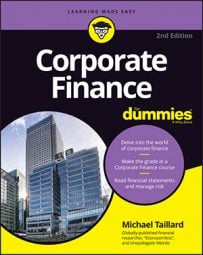The operating income portion of the income statement takes into account a company’s costs of doing business other than the costs of goods sold. Think of it as a way of breaking down the overhead costs associated with all the standard operations without including any infrequent revenues or costs.
The overall goal of the operating income is to determine how much money a company is making after taking into consideration all the costs the company incurs during its primary and supporting operations. Here’s what goes into the operating income:
Selling expense: Selling expense includes everything a company spent on selling the products it bought or made, such as advertising, sales wages or commissions, shipping, and the cost of retail outlets.
The cost of opening a retail outlet may be a selling expense, or perhaps just the cost of a sales team may be a selling expense — anything at all related or attributed exclusively to the sales process, whether entirely or in-part.
General and administrative costs: General and administrative costs, also called G&A costs, cover all the expenses of running a company. The salaries of the finance, marketing, human resources, and management staff fall into this category, as do the salaries of everyone who isn’t directly associated with making or selling the inventory.
Other costs that fall into this category include the costs of buildings, utilities, office supplies, insurance, office equipment, decorations, and a wide variety of other stuff. Any time a company spends money on an expense that keeps the company going but that isn’t related to production or sales, it goes into the G&A costs.
Depreciation and amortization: The income statement includes a section for depreciation and amortization, but it doesn’t reveal anything about a physical transition of money from one party to another. Rather, this section simply recognizes the use of items that will lose value. The amount of depreciation listed on the income statement is the same as the amount incurred during a single period that gets added to the balance sheet.
(Note: The depreciation and amortization value on the income statement isn’t the same value that appears on the balance sheet because the balance sheet is cumulative while the income statement includes only depreciation incurred that year. But the amount of depreciation incurred in the year will go into the balance sheet’s cumulative total.)
Because the operating income represents the amount of money a company has left over after it has paid for all its standard operations, companies need to consider it when planning whether or not to expand, whether to use equity or debt to fund expansion, and how much money they can borrow and safely pay back using their primary operations. Operating income is also useful in other metrics, such as liquidity.

